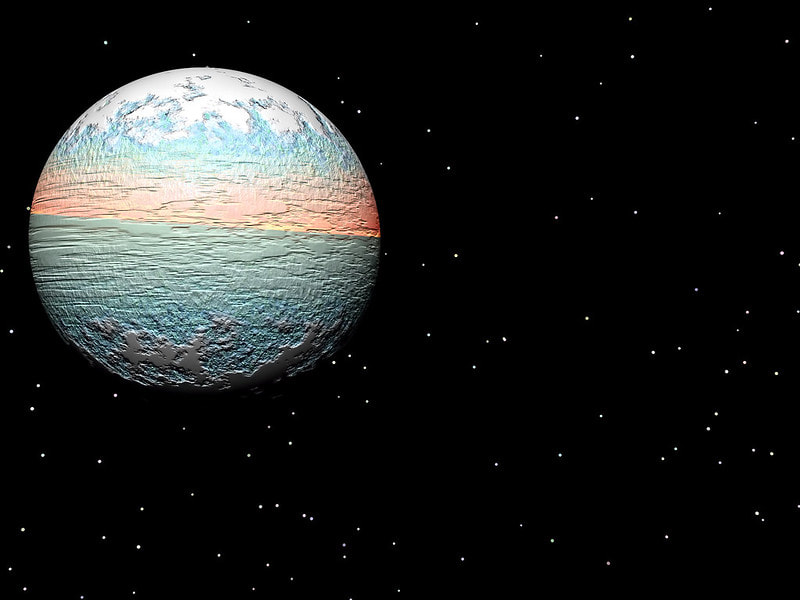|
By Naviya Makhija
While the Internet remains fixated on Pluto’s status as our solar system’s ninth planetary member, another may soon contend for the position. Initially named Planet X, ‘Planet 9’ is a theoretical planet that many believe to exist beyond the Kuiper belt. The belt, which surrounds Neptune’s orbit, is a conglomeration of icy structures that include asteroids, comets, and dwarf planets such as Pluto. The existence of Planet 9 was first hypothesized in 2014 and inspired by the discoveries of Sedna and 2012 VP113, both of which are dwarf planets also in the Kuiper belt. Not only did studies of their orbits not conform to the expected trajectories derived from the current model of the solar system, but they also posed questions that could not be answered by our current hypothesis of planetary development. The two orbit in an “intermediate” space between the Sun and the Oort cloud – a shell of icy objects that exists past the Kuiper belt – often referred to as the inner Oort cloud. This location is seemingly inexplicable, as it’s too far from the planets in our solar system for them to be the primary influencers and too close to the Sun for it to be attributed to the pull of the Oort objects. One possible explanation is the existence of Planet 9 near Sedna’s perihelion, which is the point of Sedna’s orbit that is closest to the Sun. The Kuiper belt itself is evidence that Planet 9 exists. Some simulations have shown that one possibility for Planet 9 is that it once existed between Uranus and Neptune. As the planets moved outward, the theoretical planet’s gravity trapped the bodies in the Kuiper belt causing them to coalesce into the ‘groove-like’ structure that now exists. The 2015 discovery of a third dwarf planet, nicknamed ‘The Goblin,’ strongly corroborated the previous discoveries of Sedna and 2012 VP113, and it also points toward the existence of a theoretical planet such as Planet 9. In fact, The Goblin is the most promising of the fourteen similar dwarf planets discovered thus far, as its large orbit allows us to better single out and study its influencing factors. The Goblin’s orbit is seemingly unaffected by any of the four planets residing in the outer Solar System – Jupiter, Saturn, Uranus and Neptune – because it doesn’t pass close enough to any of them. Its isolated path implies that there must be something else – perhaps a large body such as Planet 9 – that is influencing it. The orbits of these three dwarf planets are similar in longitude of perihelion, which describes the elongated part of their respective elliptical orbits. Their longitudes of perihelion are incidentally consistent with the predicted gravitational force that a body such as Planet 9 would exert. Computer simulations modeling the birth and growth of our solar system are now being conducted to substantiate these claims, many of which are helping to uncover a surprising history. Of the hundreds of simulations ran that excluded Planet 9, only one percent yielded a model of the solar system that is somewhat similar to what we observe today. These results indicate the large possibility that there are elements that currently exist or have existed that elude us and have influenced the formation of our solar system without our knowledge. Within the other 99 percent of trials, there are key discrepancies with our known solar system, with some as large as the absence of essential players such as Uranus or Neptune. According to the simulations, they were expelled from the solar system as a result of Jupiter’s gravitational field. Given that Uranus and Neptune definitely exist, new research is attempting to account for potential bodies, such as Planet 9, that could change our current understanding of solar system evolution. These trials yielded results that conformed more to the system observed today. From this and similar statistical analyses, it’s estimated that the speculated planet has ten times the mass of Earth and an orbit between 500 and 1000AU, which suggests that a year on Planet 9 could be almost 20,000 times as long as that of our own. We might be tempted to believe that, given its size, it would be easy to detect Planet 9. However, its aphelion, which is the furthest point of a planet’s orbit from the sun, far exceeds our current methods of detection. As a planet gets further from the Sun, its brightness decreases by the inverse square law, making it difficult to observe. This leads many to be skeptical of the presence of Planet 9. They claim that conclusions are being drawn from a small sample, and they highlight the possibility that the altered orbits of 2012 VP113, Sedna, and 2015 TG387 or even the Kuiper belt’s unique structure are simply a result of the cumulative gravity of the smaller objects surrounding them. Nevertheless, evidence supporting the existence of Planet 9 is on the rise, and perhaps soon we might see Pluto stripped of its status as the honorary ninth member of our solar system.
0 Comments
Leave a Reply. |
Categories
All
Archives
April 2024
|

